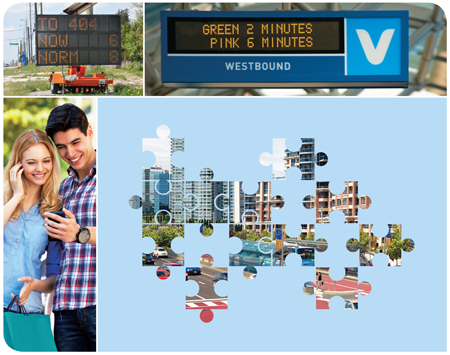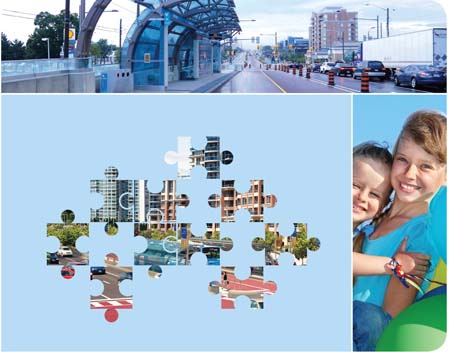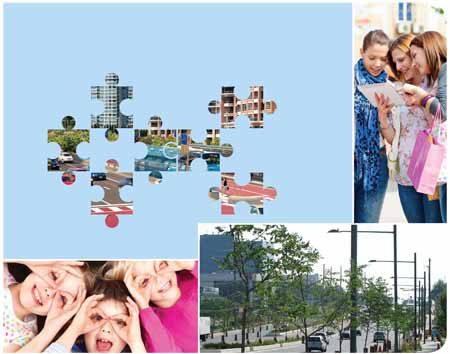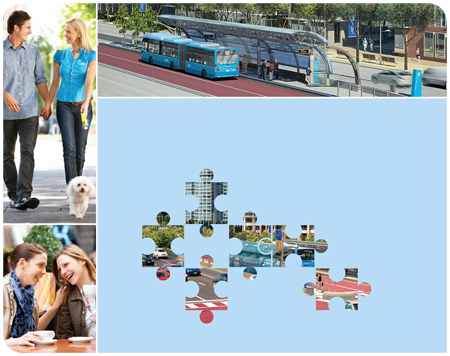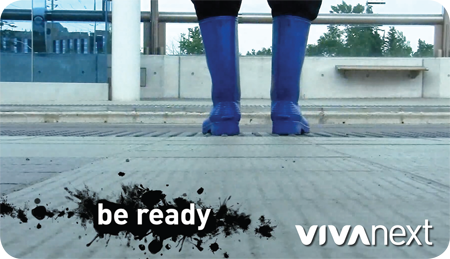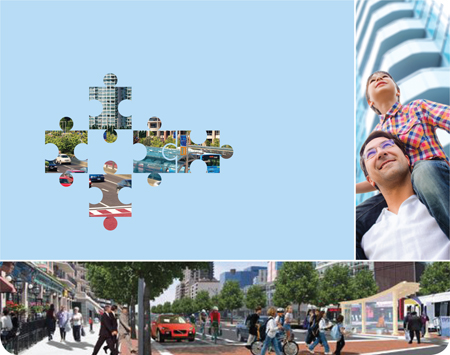It’s stating the obvious to say that our roadways are getting slower because they’re carrying too much traffic – that’s the basic definition of gridlock, and it’s an increasing problem everywhere across the GTA. But what can be done about it? VivaNext is one part of the solution – if people have the choice of taking a reliable and convenient rapid transit system, there will be fewer cars on the road, and everyone will be able to get around more quickly.
But even with vivaNext, there’s still going to be a lot of traffic out there, and York Region doesn’t have room for more or bigger roads. So what else can be done to help traffic move better? This is where ITS comes in.
Although some people may think ITS is connected to “Information Technology”, in the vivaNext world ITS stands for “Intelligent Transportation Systems”. ITS is an international transportation-engineering discipline that is concerned with trying to improve the efficiency of travel, whether it involves the travelling public, commercial vehicles, or transit. The basic assumptions behind ITS are that delays cost money, and more efficient travel saves money. This new technology is an absolutely critical, although low-visibility, component of the vivaNext program.
ITS is used to ensure that all parts of a traffic corridor’s infrastructure – the physical roadway’s design, lane markings and signs, traffic signal design and timing, and the brains that connect all these pieces – are designed as one coordinated system. In a transit project ITS has an additional layer which is concerned with how the transit system is integrated into that larger system.
ITS is also about giving people accurate information so they can make better choices about travel, whether that means building roadside signage to alert drivers to upcoming congestion and suggest alternative routes, or giving transit riders real-time information about next bus arrivals.
Overall, ITS is about finding the perfect balance so that all the users of a roadway find it works better; making a roadway faster for one group of users cannot come at the expense of all the other users. ITS starts with an understanding of who is using the roadway now and who will be using it in the future, and then develops strategies to make it more efficient for everyone.
Along Highway 7, we know that drivers and transit are the main users currently, but that’s going to change as development intensifies. The future Highway 7 will be significantly more urbanized, with more people living and working along the corridor. That means there will be more pedestrians and cyclists whose travel needs need to be considered, in addition to car and truck traffic. Helping transit vehicles stay on schedule is also a priority, since rapid transit can’t be rapid if it’s stuck in traffic.
These ITS strategies will balance everyone’s needs, to help everyone get to where they’re going as fast as possible!

